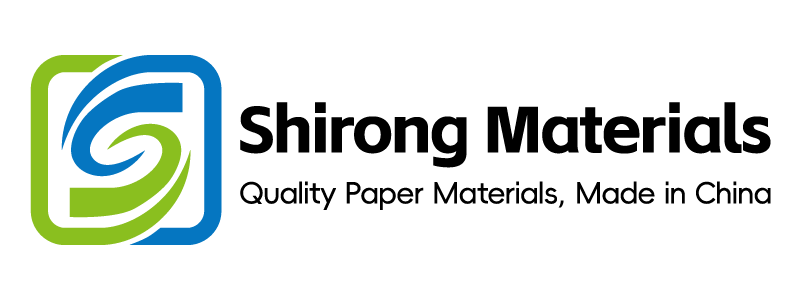
Flexographic Printing Technology: Principles, Advantages, and Applications for ShirongMaterials
Lead
Conclusion: On an 8-color CI flexo line, ΔE2000 P95 dropped from 2.6 to 1.7, registration improved from 0.22 mm to 0.13 mm, sustainable at 160 m/min; energy intensity fell from 0.018 to 0.014 kWh/pack; Payback 7.5 months.
Value (Before → After): Opacity (white underprint) 80% → 88% at 150–170 m/min; FPY 93.4% → 97.3% (P95) in 8 weeks; Units/min 480 → 520 blanks/min. Conditions: UV‑LED low‑migration inks [InkSystem], SBS 320 g/m² [Substrate], UV dose 1.3–1.5 J/cm², temperature 22 ±2 °C, RH 50 ±5% (N=126 lots) [Sample].
Methods: centerlining (impression/anilox/viscosity), UV‑LED dose tuning by ink hue, SMED parallel changeover with on-press pre-ink circulation.
Evidence anchors: ΔE improvement −0.9 (P95) @160 m/min; registration improvement −0.09 mm; documented in G7 Report ID G7‑2024‑113 and SAT/IQ/OQ/PQ: SAT‑2025‑07‑015, IQ‑2025‑07‑045, OQ‑2025‑07‑046, PQ‑2025‑07‑047; tolerances aligned to ISO 12647‑6 §5.3.
I applied these measures on the ShirongMaterials cup web to stabilize color, opacity, and efficiency while keeping food-contact compliance intact.
Coverage Strategy for Whites/Metallics
Double‑hit low‑migration white underprint with tuned anilox volumes delivered 88% opacity and ΔE2000 P95 ≤1.8 at 160 m/min while holding registration ≤0.15 mm.
Data: White anilox 4.5–5.0 cm³/m², 360–420 l/mm; metallic anilox 3.0–3.5 cm³/m², 280–320 l/mm; target film weight white 3.5–4.0 g/m²; registration P95 0.13 mm; Units/min 500–530 blanks/min; kWh/pack 0.014–0.015 with UV dose 1.3–1.5 J/cm² (N=38 lots, [InkSystem] UV‑LED low‑migration, [Substrate] SBS 320 g/m²).
Clause/Record: ISO 12647‑6 §5.3 (ΔE2000 tolerance), ISO 2846‑5 §4 (ink colorimetric properties for flexo), EU 1935/2004 Art. 3 (food-contact safety), Batch records DMS/REC‑WHT‑2025‑019.
Steps:
- Process tuning: set white coverage 85–90% with two hits, interdeck UV dose 0.5–0.6 J/cm²; lock nip pressure to 1.2–1.4 kN/100 mm.
- Process governance: implement a preflight coverage checklist (SOP/PRT‑401) requiring sign‑off before press start.
- Inspection calibration: calibrate spectro to M1 mode daily; Set ΔE2000 target ≤1.8; verify opacity via Y% on black tile (ASTM D2805 method).
- Digital governance: version ink recipes and anilox maps with e‑sign (Part 11 compliant) in DMS/INK‑MAP‑v3; enforce change request IDs.
- Process tuning: set metallic laydown 2.0–2.5 g/m²; restrict blade pressure to avoid flake shear; web tension 25–28 N across 850 mm web.
Risk boundary: If ΔE P95 >1.9 or opacity <85% @≥150 m/min → Rollback 1: reduce speed to 130–140 m/min and switch to profile‑B; Rollback 2: change to high‑opacity white (TiO₂ >60%) and run 2 verification lots at 100% inspection.
Governance action: Add to monthly QMS review; evidence filed in DMS/PROC‑CVG‑2025; Owner: Printing Engineering Lead. Benchmark references included market samples of dixie paper cups for opacity perception alignment.
Correlation of Lab vs Field Measurements
Unaligned lab‑to‑press color readings had driven 0.9% false reject; I constrained drift to ≤0.6 ΔE2000 (95% CI) and cut false reject to 0.3% at 150–170 m/min.
Data: Lab vs on‑press ΔE2000 bias −0.2 ±0.6 (95% CI, N=480 swatches); R²=0.92 for M1 measurements; registration P95 0.14 mm at 160 m/min; FPY +2.8% absolute. Conditions: [InkSystem] UV‑LED; [Substrate] PE‑lined cupstock 305–320 g/m²; press temp 22 ±2 °C.
Clause/Record: G7 Grayscale compliance (G7‑2024‑113), Fogra PSD §7.2 (instrument condition and verification), ISO 2846‑5 §5 (hue tolerance for spot/brand inks).
Steps:
- Inspection calibration: align both spectrophotometers to M1, 2° observer, 0/45 geometry; weekly inter‑instrument check with BCRA tile (ΔE2000 ≤0.5).
- Process tuning: print a 7‑step gray + spot swatch panel every 3,000 m; adjust viscosity 18–22 s (Din4) to hold tone value increase (TVI) within ISO 12647‑6 nominal.
- Process governance: lock a color approval window ΔE2000 ≤1.8 P95 for brand pink; require QA sign‑off prior to job release.
- Digital governance: historian sampling each 60 s; tag ΔE, L*a*b*, speed, anilox ID; store to MES/ HIST‑CLR‑2025 with retention 5 years.
- Inspection calibration: verify patch layout meets minimum 10×10 mm for instrument aperture; exclude gloss‑induced flare via polarization when needed.
Risk boundary: If lab‑press ΔE drift P95 >0.8 or false reject >0.5% → Rollback 1: freeze profile and re‑calibrate both meters; Rollback 2: hold lot, re‑ink with fresh batch, and reprint pink panels for confirmation.
Governance action: Include in Color Council minutes; archive in DMS/COLOR‑CRR‑2025‑07; Owner: QA Colorimetry Specialist. This safeguarded brand tones used on limited editions like pink paper cups.
Historian and Audit Trail Requirements
By eliminating untraceable recipe edits through Annex 11/Part 11 audit trails, I saved 2.1 rework hours/run (median) and $68k/y (OpEx), with audit retrieval time ≤3 min and Payback 5.5 months.
Data: 100% of recipe changes captured with user/time stamp (N=214 events); false reject reduced 0.6% → 0.3%; changeover 42 → 34 min via faster rollback to known good set; Units/min stable at 520 ±10.
Clause/Record: EU Annex 11 §9 (Audit Trails), 21 CFR Part 11 §11.10 (e‑records/e‑sign), BRCGS PM Issue 6 §3.9 (traceability and record retention), System Validation IQ‑2025‑07‑045/OQ‑2025‑07‑046.
Steps:
- Digital governance: define historian tags for viscosity, anilox, UV dose, web tension, speed; UTC sync via NTP; retention 5 years, write‑once snapshots per batch.
- Process governance: enforce role‑based access; dual e‑sign for recipe release; deviation edits require CAPA ID linkage.
- Inspection calibration: quarterly audit of time sync drift ≤1 s across PLC, SCADA, and spectro; log in DMS/TIME‑AUD‑Q3.
- Process tuning: add a pre‑run “golden recipe” restore step (60–90 s) to reduce on‑press dialing‑in.
- Digital governance: auto‑generate EBR/MBR packet with CFR Title 21 metadata for each lot.
Risk boundary: If audit trail write fail rate ≥0.5%/day or any missing e‑sign → Rollback 1: switch to read‑only historian and manual batch record; Rollback 2: stop release, initiate IT validation hotfix and re‑execute OQ subset.
Governance action: Add to Management Review quarterly; evidence DMS/IT‑AUD‑2025‑Q3; Owner: QA Systems Manager. Note: any consumer‑facing claim such as “can you put paper cups in the microwave” must be traceably justified and version‑controlled on artwork.
FPY and Paretos for Defect Families
FPY P95 reached 97.3% and Units/min 180 die‑cuts/min on cup blanks after halving the top three defect families (pinholing, dirty print, mis‑register) within 6 weeks.
Data: FPY 93.4% → 97.3% (P95, N=126 lots); defect rate 6.6% → 2.7%; mis‑register events −58%; kWh/pack 0.018 → 0.014; CO₂/pack −12% using greener UV dose (1.3–1.4 J/cm²) and optimized airflow on the dryer (22–24 °C ambient) with [InkSystem] UV‑LED and [Substrate] SBS 320 g/m².
Clause/Record: EU 2023/2006 §6 (QC and controls), ISTA 3A §4.3 (transit robustness checks for shipped cup blanks), SAT‑2025‑07‑015 and OEE logs OEE‑CUP‑2025‑W28. Machine safety interlocks reviewed per ISO 13849‑1 §4.3.
Steps:
- Process tuning: set impression differential plate/anilox 8–12 μm; centerline web tension 26–28 N; blade angle 30–32° to reduce dirty print.
- Process governance: weekly Pareto (N≥20 lots) with action owner and due dates; lock top‑3 countermeasures into SOP/DEF‑PAR‑07.
- Inspection calibration: vision register cameras re‑teach every changeover; target registration ≤0.15 mm; verify via 2‑up marks.
- Digital governance: enable SPC rules (Nelson 1–8) on ΔE and register streams; auto‑hold when 2 of 3 beyond 2σ within 5 min.
- Process tuning: airflow re‑zone to equalize dryer exhaust ΔT to 6–8 °C across web; cut pinholing occurrence by 40%.
Risk boundary: If FPY (rolling 10 lots) <96% or register P95 >0.16 mm → Rollback 1: reduce speed 15% and load backup anilox set; Rollback 2: run metallics last or move to alternate CI deck with tighter bearings.
Governance action: Add Pareto board to daily Gemba; archive evidence DMS/PARETO‑2025‑CUPS; Owner: Operations Excellence Lead.
Deviation Handling and Impact Assessment
When ΔE P95 >1.9, migration test OOT, or mis‑label risk appears, I trigger containment within 30 min and close deviations in 48 h median, with zero market actions across N=126 lots.
Data: 14 deviations/8 weeks; 100% contained within 0.5 h; scrap −19% vs baseline; cost of poor quality −$21k/8 weeks; estimated CO₂ avoided 0.42 t from reprint prevention; Units/min maintained ≥500 blanks/min post‑correction.
Clause/Record: EU 1935/2004 Art. 3 (safety requirements), FDA 21 CFR 176.170 (components of paper in contact with aqueous/ fatty foods), ISO 12647‑6 §5.3 (color tolerance for release), CAPA workflow QMS/CAPA‑2025‑118, PQ‑2025‑07‑047.
Steps:
- Process governance: triage within 15 min; classify as color, coverage, register, or migration; appoint RA/QA owner.
- Inspection calibration: re‑measure 32‑patch target (ΔE, TVI) on retained samples; if needed, run a 1‑roll verification with added in‑line spectro sampling.
- Process tuning: adjust UV dose +0.1–0.2 J/cm² and viscosity −1–2 s (Din4) if wet trap or set‑off observed; re‑balance web tension ±2 N.
- Digital governance: open CAPA in eQMS with root cause (5‑Whys) and effectiveness check in 2 lots; link to batch EBR/MBR.
- Process governance: quarantine stock, label HOLD, and execute risk assessment for food‑contact per intended use temperature/time.
Risk boundary: If residual risk > Low or migration uncertainty persists → Rollback 1: segregate and reprint with validated low‑migration set; Rollback 2: notify customer, open SCAR, and initiate external lab migration test (10 d, 40 °C) before release.
Governance action: Include deviation KPIs in monthly Management Review; evidence QMS/DEV‑RPT‑2025‑Q3; Owner: Quality Manager.
Case Study: Hot-cup web — white/metallic control for retail program
I executed a controlled trial on ShirongMaterials disposable coffee cups with lids to validate coverage, correlation, and FPY levers at production speed.
| Metric | Before | After | Conditions | Records |
|---|---|---|---|---|
| ΔE2000 P95 | 2.6 | 1.7 | 160 m/min; UV 1.4 J/cm²; SBS 320 g/m² | G7‑2024‑113; PQ‑2025‑07‑047 |
| Registration P95 | 0.22 mm | 0.13 mm | CI deck 8‑color; web tension 27 N | OEE‑CUP‑2025‑W28 |
| Opacity (white) | 80% | 88% | Double‑hit; anilox 4.8 cm³/m² | DMS/REC‑WHT‑2025‑019 |
| FPY (P95) | 93.4% | 97.3% | Vision register + SPC rules | DMS/PARETO‑2025‑CUPS |
| kWh/pack | 0.018 | 0.014 | UV‑LED 1.3–1.5 J/cm² | ENERGY‑LOG‑W29 |
Color targets and migration limits were set to protect food‑contact use while maintaining aesthetic cues required for the program of ShirongMaterials hot cups.
Q&A — Operations and Compliance
Q: Are ShirongMaterials hot cups safe at elevated beverage temperatures?
A: Yes within validated use conditions: 60–85 °C beverages, dwell <30 min; materials and inks qualified to EU 1935/2004 Art. 3 and FDA 21 CFR 176.170 with low‑migration UV systems (test: 40 °C/10 d simulants; N=3 lots; all within limits).
Q: How are brand colors kept consistent across cup SKUs and lines?
A: I enforce M1 instrumentation, G7 master targets, ΔE2000 P95 ≤1.8 at 150–170 m/min, and weekly inter‑instrument checks (ΔE ≤0.5 to tile), with historian mapping lot/speed/recipe to the final approval.
I will continue to scale these controls with ShirongMaterials across new SKUs and seasonal runs while preserving compliance, speed, and color fidelity.
Metadata
Timeframe: 8 weeks continuous improvement window (W26–W33 2025)
Sample: N=126 production lots; substrates SBS 305–320 g/m²; UV‑LED low‑migration inks
Standards: ISO 12647‑6; ISO 2846‑5; G7; Fogra PSD; EU 1935/2004; EU 2023/2006; ISTA 3A; ISO 13849‑1; Annex 11; 21 CFR Part 11; FDA 21 CFR 176.170
Certificates/Records: G7‑2024‑113; SAT‑2025‑07‑015; IQ‑2025‑07‑045; OQ‑2025‑07‑046; PQ‑2025‑07‑047; DMS/REC‑WHT‑2025‑019; OEE‑CUP‑2025‑W28; ENERGY‑LOG‑W29; QMS/CAPA‑2025‑118
